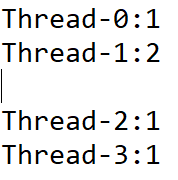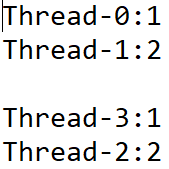package t1;
import java.util.concurrent.TimeUnit;
import java.util.concurrent.atomic.AtomicLong;
public class TestThread23 {
private static AtomicLong nextId = new AtomicLong(1);// 原子
private static volatile Long addLong = 1L;// 非可见 加上volatile修饰可满足可见性有序性、但还是非原子操作
static long getNext() {
return nextId.getAndIncrement();
}
static long getAddLong() {
return addLong++;
}
Runnable r = () -> {
System.out.println(Thread.currentThread().getName() + ":" + getNext());
};
Runnable r1 = () -> {
System.out.println(Thread.currentThread().getName() + ":" + getAddLong());
};
Thread t1 = new Thread(r);
Thread t2 = new Thread(r);
Thread t3 = new Thread(r1);
Thread t4 = new Thread(r1);
public static void main(String[] args) throws InterruptedException {
TestThread23 t = new TestThread23();
t.t1.start();
t.t2.start();
TimeUnit.SECONDS.sleep(1);
System.out.println();
t.t3.start();
t.t4.start();
}
}
测试结果:


或者
